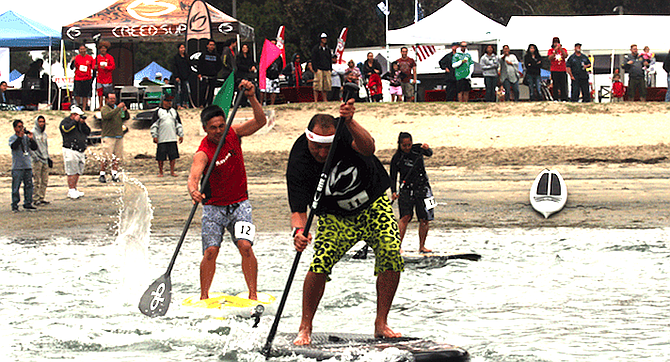 Facebook
Facebook
 X
X
 Instagram
Instagram
 TikTok
TikTok
 Youtube
Youtube

Long before the magnetic compass, the sextant, global positioning systems and other navigational aids, Polynesians sailed solely by observation of the sun, stars, and ocean swells coupled with other signs of nature such as the flight path of birds and the shapes of clouds. For millennia, this skill was passed down by oral tradition from master to apprentice, often in the form of song, with the aim of building a star compass.
The star compass was not held by hand or mounted at the helm; it was kept in the mind and utilized memory of the "houses of the stars," the Hawaiian description of the place where heavenly bodies rise and set on the constant horizon of the sea. Thus, by rote only, prospective Polynesian navigators learned to find their direction on a vast and often featureless ocean. But for the effort of one man, this art of navigation might have been lost in the waves of societal evolution.
Pius “Mau” Piailug of the island Satawal in the Caroline chain (a widely scattered archipelago of tiny islands in the northwestern Pacific Ocean) was one of few remaining instructors of traditional, non-instrument wayfinding. In 1950 and at the age of eighteen, Mau became a palu, or master navigator. This was around the time the first western missionaries visited the island, which might explain the vitality there of wayfinding well into the 19th century unlike other Polynesian and Micronesian communities that were relying on modern methods of navigation. Mau’s concern was that his tradition and culture would be lost. In the mid 1970s, the Polynesian Voyaging Society built the hōkūle‘a, a traditional double-hulled Hawaiian seafaring canoe, and Mau navigated the vessel 2,290 nautical miles from Hawaii to Tahiti using only the star compass in his mind.
Founded in November, 2011 here in San Diego, the Nā Koa Kai Canoe Club is dedicated to perpetuating the Hawaiian and Pacific Islander cultures, based primarily on the Wa’a, or Hawaiian outrigger canoe. This Saturday, the Nā Koa Kai Canoe Club’s Shaka Fest will highlight Polynesian culture at the bayside setting of De Anza Park. The activities in Mission Bay will include stand-up paddle race for all ages, a youth-only Hawaiian outrigger canoe regatta, and Polynesian entertainment and cuisine. Outrigger and stand up paddleboard vendors will rent demo equipment for those who wish to get their feet wet, Polynesian-style.


Long before the magnetic compass, the sextant, global positioning systems and other navigational aids, Polynesians sailed solely by observation of the sun, stars, and ocean swells coupled with other signs of nature such as the flight path of birds and the shapes of clouds. For millennia, this skill was passed down by oral tradition from master to apprentice, often in the form of song, with the aim of building a star compass.
The star compass was not held by hand or mounted at the helm; it was kept in the mind and utilized memory of the "houses of the stars," the Hawaiian description of the place where heavenly bodies rise and set on the constant horizon of the sea. Thus, by rote only, prospective Polynesian navigators learned to find their direction on a vast and often featureless ocean. But for the effort of one man, this art of navigation might have been lost in the waves of societal evolution.
Pius “Mau” Piailug of the island Satawal in the Caroline chain (a widely scattered archipelago of tiny islands in the northwestern Pacific Ocean) was one of few remaining instructors of traditional, non-instrument wayfinding. In 1950 and at the age of eighteen, Mau became a palu, or master navigator. This was around the time the first western missionaries visited the island, which might explain the vitality there of wayfinding well into the 19th century unlike other Polynesian and Micronesian communities that were relying on modern methods of navigation. Mau’s concern was that his tradition and culture would be lost. In the mid 1970s, the Polynesian Voyaging Society built the hōkūle‘a, a traditional double-hulled Hawaiian seafaring canoe, and Mau navigated the vessel 2,290 nautical miles from Hawaii to Tahiti using only the star compass in his mind.
Founded in November, 2011 here in San Diego, the Nā Koa Kai Canoe Club is dedicated to perpetuating the Hawaiian and Pacific Islander cultures, based primarily on the Wa’a, or Hawaiian outrigger canoe. This Saturday, the Nā Koa Kai Canoe Club’s Shaka Fest will highlight Polynesian culture at the bayside setting of De Anza Park. The activities in Mission Bay will include stand-up paddle race for all ages, a youth-only Hawaiian outrigger canoe regatta, and Polynesian entertainment and cuisine. Outrigger and stand up paddleboard vendors will rent demo equipment for those who wish to get their feet wet, Polynesian-style.
Comments